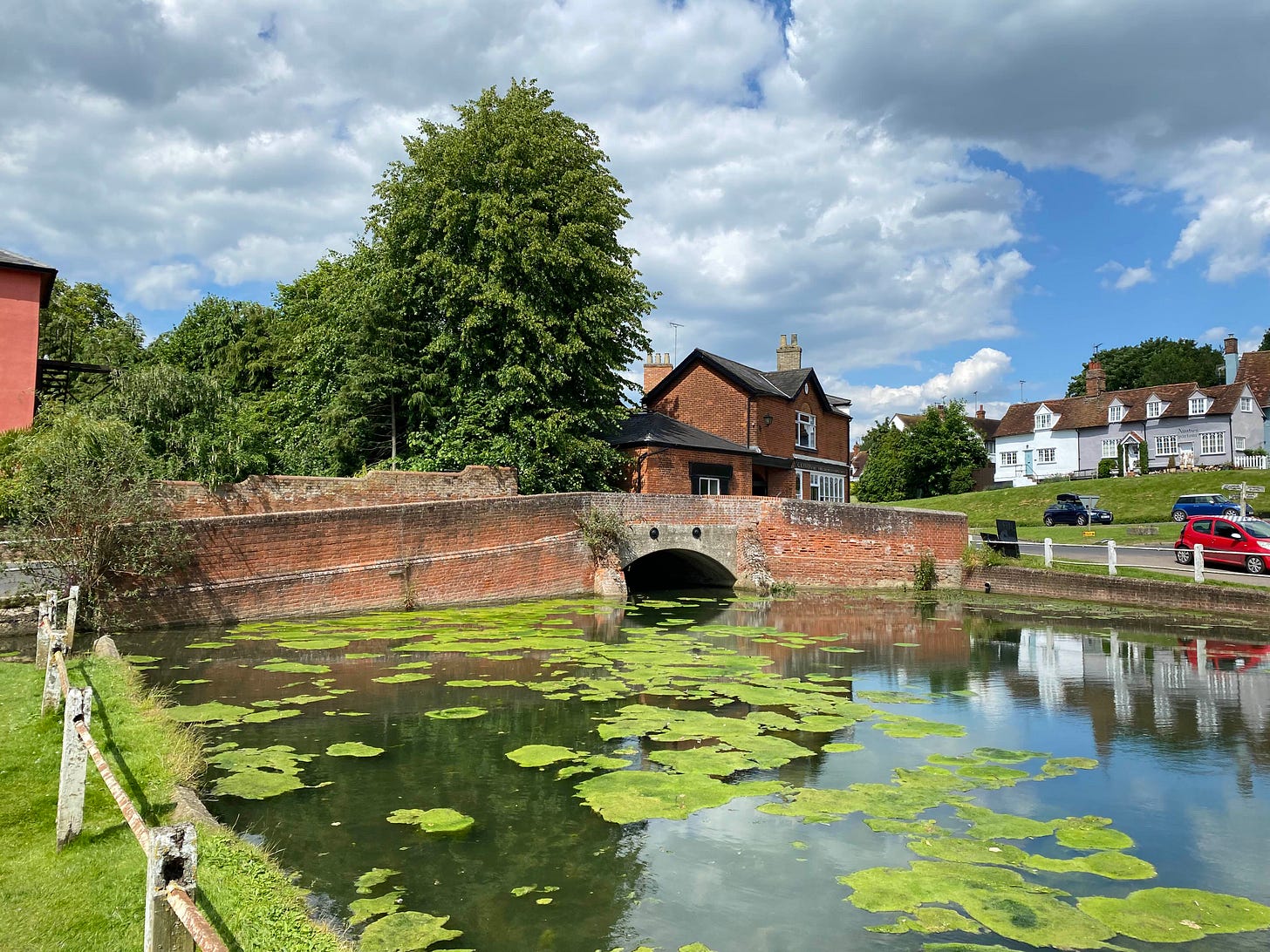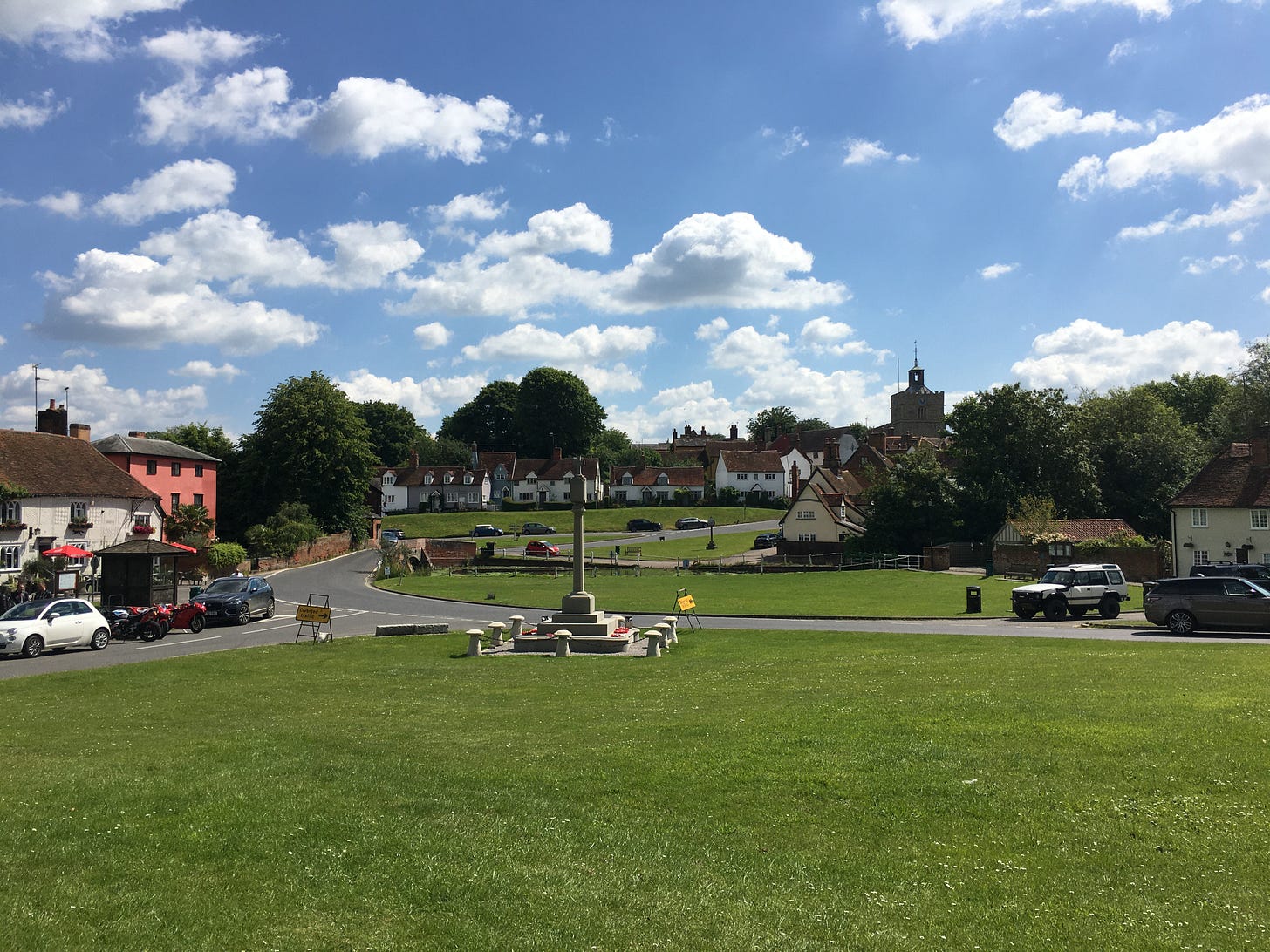There is gold hidden upon those crooked, wooden bookshelves in your local second handbook shop. Precious words that tell of times now forgotten, but whose scenes and stories remain indelibly impressed in ink upon the brown, faded pages. Words that tell of old agricultural folklore, farming methods of great beauty and ingenuity. Place-based wisdom which sheds a guiding light on how to interact convivially with the rest of the created realm. For these rich storehouses of treasure, we have the 20th Century English Agrarians to thank.
H.J. Massingham, A.G. Street, Eve Balfour, W.H. Hudson, Adrian Bell, C. Howard Jones and many more. These are some names to look out for when browsing the regional or British section of any good second-hand bookstore (one with wooden beams and creaky floorboards should do the trick). If that fails, if the store has an agricultural section, that is almost sure to yield one or two of these gems.
Holding a cloth-bound volume from one of these authors in your hands is an immense delight. Most of their works are out of print (and will likely remain so), thus the owner of a copy is a curator of scarce and precious knowledge, a steward and protector of something immensely valuable. These are a record of good, old England, when man and beast dwelt in greater harmony. When local traditions enlivened each and every village, and when the fields were full of skilful farmers and farmhands growing good and healthy crops and lovingly tending to their livestock. Life was far from easy, rural life rarely is, but it was good.
Two of the foremost reasons why the Agrarians are a joy to read is the vocabulary they employ and the scenes they chose to depict. Their writing sings off the page. Yes, at times it is flowery, and yes, at times one can get lost in the plethora of adjectives and archaic vocabulary, but it is akin to being lost in beauty. What is fascinating though are many of the scenes and encounters they document are fairly mundane. They noted things which caught their curious and astute eye, things which others would overlook or dismiss. A baker doing his rounds or children playing Skittle-Jack on a lawn. A stranger walking down a lane or men harvesting wheat in the fields. Adrian Bell extoling the joys of fresh bread is a perfect example:
“What lot there is in this simple stuff of life; what a lot more than we, who are so multifariously engaged, ever see. One thing we do see. Every day in villages, towns and cities we see bread being delivered. The bright new loaves, basketsful, vans-ful, handcarts-ful, being handed in at every door all along the streets like golden seeds of life. It is a good sight, if only we stopped a moment to think of it, and to relate the ways of God and man: “this day our daily bread’. And there is English wheat, this day, we know, in every one of those loaves.” *
It is not only their skill in making the mundane beautiful that makes the agrarians worth reading. What makes them so valuable to us in the present “machine-dominated” day is their judicious treatment of the countryside at a time of great change. They witnessed how things once were, before the arrival of industrial agriculture and the “roadification” of the UK. They keenly saw the first tentative impacts of the Machine on the countryside, its inhabitants and wildlife – and they sounded the alarm. Though powerless to prevent the slow and steady invasion of the machine into the countryside (though they did carve out areas of resistance such as in the Vale of Evesham) and the far-reaching changes in its wake, they faithfully documented the “old ways” to remind us of the way things were and to provide a record and an account that can be returned to.
Chief among their concerns was the loss of individuality from the countryside. This critique has borne out. Extensive monocultures which now dominate our countryside. Regional and locally attuned practices, breeds, and traditions have been eroded, with some lost for good. Much loved species such as the cuckoo, tree sparrow, turtle dove have disappeared from vast swathes of the countryside. Granted, there has been a much-appreciated rural revival in recent decades, a renewed recognition of the importance of regionality. Valiant efforts of the Rare Breeds Trust in saving breeds from extinction, and farmers and conservationists working together to safeguard biodiversity on farms.
But despite these laudable efforts, the general loss of beauty, regional particularities, and cherished species to the “great intensification machine” continues apace. Massingham, who saw the approach of this loss first hand, expresses with his usual fervour the tragedy in a passage from his book Country:
“That a particular place should with its human community possess an intensely localised existence is the only reason why they should exist at all. With local handicrafts destroyed, with agriculture starved of its young men, with the country degraded to an annexe of the town, taking on its manners and values at second-hand, bearing the yoke of its standardisations, yielding up its particular rural idiom whether to the general store or to the arterial road or other expression of the urban machine, that countryside becomes a mongrel and a bastard.”
Having visited many English villages which have lost their local stores, customs, and traditions, I can say I think Massingham has sadly been proved broadly correct.
We may not be able to go back to all the old ways, (in many cases it would be unwise to do so) but the principles of low intensity management, adaptability to place, regionalism, and love of the small that the Agrarians strenuously advocated for can be implemented today in partnership with sensitive modern methods.
It may be in opening the pages of these old books of wisdom that we take the first step on the road to recovery for our abused and degraded agricultural lands. A road that takes us towards a future where nature and man exist in greater harmony. Where cycles of return are heeded, where rural traditions and cultures are upheld and enjoyed. Where farmers are cherished, and where beauty returns to the countryside in birds and butterflies, wildflowers and hedges, rare breeds and mixed crop fields. This is the patchwork Garden of England we know and love. The Agrarians can help us get to there.
* Adrian Bell, The Flower and the Wheel
Hadden Turner is a young agrarian and nature writer from Essex, UK. He writes in the tradition of Wendell Berry and other deep thinkers on agriculture, agrarianism, rurality, ecology, and sustainability all under a framework of reformed Christianity.
You can read his work here on SubStack and on X here.
If you enjoyed this article, please consider subscribing to receive more articles like this one.
If you have a comment, please click this link to the comments form. It might appear in the Letter’s Page, which will be published next week.
If you would like to write an article for us, please send you pitch by email to instituteofengland@mail.com
Finally, we would encourage you to share this with your friends and family. They might like these stories too.








